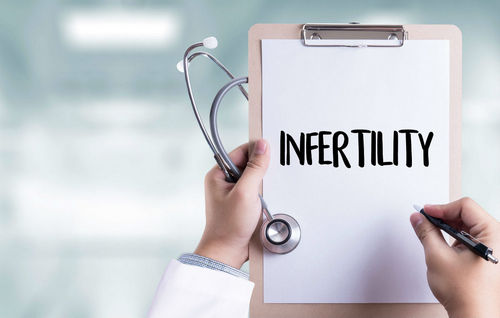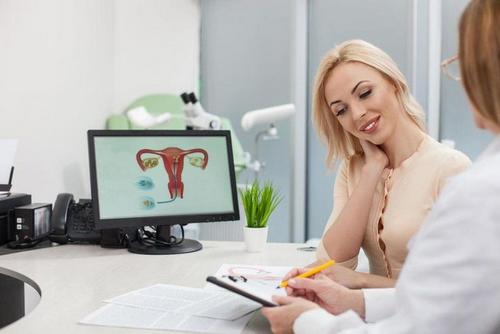Infertility is defined as the inability to conceive within 12 months for a couple having regular, unprotected intercourse in the presence of regular menstruation.
Primary infertility is the lack of any previous pregnancy, viable or non-viable, and secondary infertility is where a previous pregnancy has been conceived.
The chances of conception are approximately 80% at 12 months and 90% by 18 months. Hence it is usual to wait 12 months before investigating infertility. This timescale would be dictated by the couple, and advancing maternal age (> 38) may be a reason to commence investigations earlier, along with irregular / absent menses, history suggestive of adhesions or endometriosis and scrotal injury or surgery.
Pregnancy has a 20% chance of occurring in women aged 25 to 35 per cycle. 80 – 90% of women will achieve conception in 12 months, but this decreases with age > 35.
The causes of infertility are varied, but approximately 40% of cases are male related, 50% female related and 10% involve other factors.

Causes of female infertility include ovulation dysfunction (50%), tubal disease (30%), endometriosis (15%) and cervical factors.
A full history and examination should be undertaken to determine the cause of infertility. Whether a woman is ovulating or not can be determined on history, temperature charts and blood or urine tests.
Baseline investigations for the woman include some blood tests and urine tests. This may be followed with an ultrasound. More invasive investigations may be undertaken later e.g laparoscopy
Men should also have a full history and examination done as well as semen analysis because this will determine whether male factors are playing a role. Other investigations such as blood tests can be done as required.
Treatment
General measures include taking Folic Acid 0.5 mg daily, quitting smoking and losing weight if overweight.
Further management comes down to the cause and will be determined by this. Treatment may consist on ovulation induction with medications, surgery or referral for IVF.
Treatment can be targeted once this initial work-up is complete and the cause of infertility has been isolated. In some couples, a cause cannot be found, however treatment can still proceed to enhance the chances of a pregnancy.
Clomiphene Citrate
Clomiphene Citrate is the most common fertility drug given for women who do not ovulate (release eggs) regularly.
It works as an anti-estrogen which diminishes negative feedback to the brain and lead to increased release of gonadotropins (hormones that stimulate the ovary to grow follicles and ovulate). It will results in ovulation in 80% of women.
The usual dose is 50- 150 mg/ day, and is given for 5 days
- It usually starts from the 2nd day of the menses.
- Generally well tolerated but some side effects may occur like thinning of the lining of the uterus, and thickening of cervical mucus
- Rarely it may cause symptoms like transient hot flushes (10%), and even rarer are symptoms likebreast tenderness, pelvic pressure or pain or visual disturbance
- It may also result in twin pregnancy in 5-8% of women.
Timing of Ovulation (TOO)
Procedure is done using a transvaginal ultrasound scan to assess the response of a woman treated with Clomiphene Citrate
- Usually starts on day 12 of the menstrual cyle to check if a dominant follicle is developing from the current dose of clomiphene
- This is repeated every 2-3 days up until the follicle reaches a diameter of about 18mm or, if no dominant follicle emerges by the 20th day of menses monitoring is discontinued
- Adjustment on the dose of the clomiphene or even a change in the form of treatment (i.e. fertility injections) will be done for the subsequent cycles depending on the results.
Intra-uterine insemination (IUI)
Intrauterine insemination or IUI is a fertility treatment whereby best quality sperms that has been prepared and selected in the laboratory are then placed inside the uterus around the time that the egg is being released.
There are two types of intrauterine insemination. First is the natural cycle IUI, where the woman is able to ovulate on her own.
The second is the Stimulated IUI, where women who are unable to ovulate are given drugs such as clomiphene for fertility injections to stimulate ovulation.
1. Who is suitable for intrauterine insemination?
It is useful when the patient’s spouse has mild or moderate sperm problems.
2. What does the process involve?
Wife
- It involves doing a series of ultrasound scans to monitor the growth of the follicle (which contains the egg) in order to detect ovulation.
- When the size of the ovarian follicle reaches about 18mm, she will be given an injection, hCG, to mature the egg within the follicle.
- The IUI procedure will be performed 36 – 40 hours after the injection.
- During the procedure, a speculum will be placed in the vagina to visualise the cervix. The sperm preparation is inserted into the uterus using a thin catheter.
Husband
- He will be required to submit semen sample on the morning of IUI to Andrology laboratory*. The laboratory will process and select the best quality sperm for the procedure.
* Please highlight to your doctor if your husband will not be around on the day of IUI to arrange for freezing of semen sample. On the day of the IUI, the sample will be thawed and prepared by the Andrology laboratory. However, it is still advisable to provide fresh semen sample as far as possible.
3. What if the husband is not around during the IUI?
It is possible for the husband to provide semen sample in advance and for the specimen to be frozen. On the day of the IUI, the sample will be thawed and prepared in the usual way. This avoids the problem of the husband being absent on the day of the IUI.
However, it is usually advisable to provide fresh semen sample.
The other option will be to cancel the cycle and try again when the husband is around.
4. What are the risks of Intrauterine insemination?
Natural cycle IUI does not pose much risk at all.
Stimulated IUI can lead to multiple follicular growth, and therefore increasing the chance of a multiple pregnancy.
5. What is the success rate of IUI?
The success rate for this procedure is approximately 7 – 10% per cycle.
6. How many times can a couple try IUI?
IUI can be attempted as many times as the couple wishes.
However, the likelihood of success decreases with increasing numbers of failed IUI.
The couple must remember that increasing woman’s age reduces fertility.
The current recommendation is to try 3 cycles of IUI, and proceed to in vitro fertilization (IVF) if unsuccessful.
7. How much does a IUI treatment cycle cost?
- T.O.O Scan – $96 – $120 per scan (usually 2-3 times)
- hCG Medication – $85
- IUI procedure – $660 – $770
Note:
- Price quoted above is before GST
- Final bill may vary among patients. There may be additional investigations, medications and doctor consultations required, depending on your condition.
- NUH reserves the right to revise prices without prior notice.



